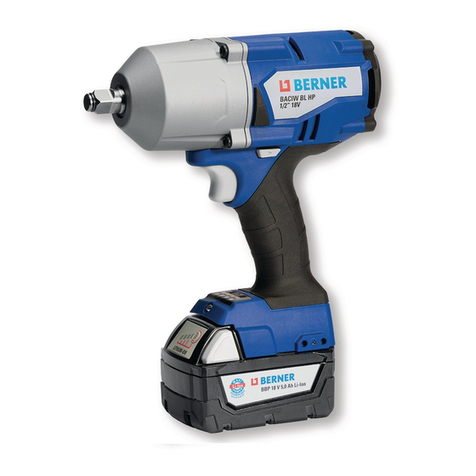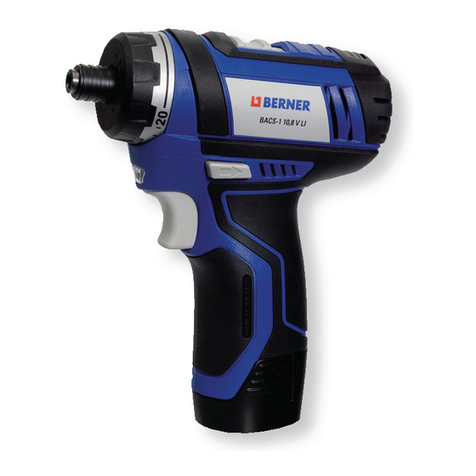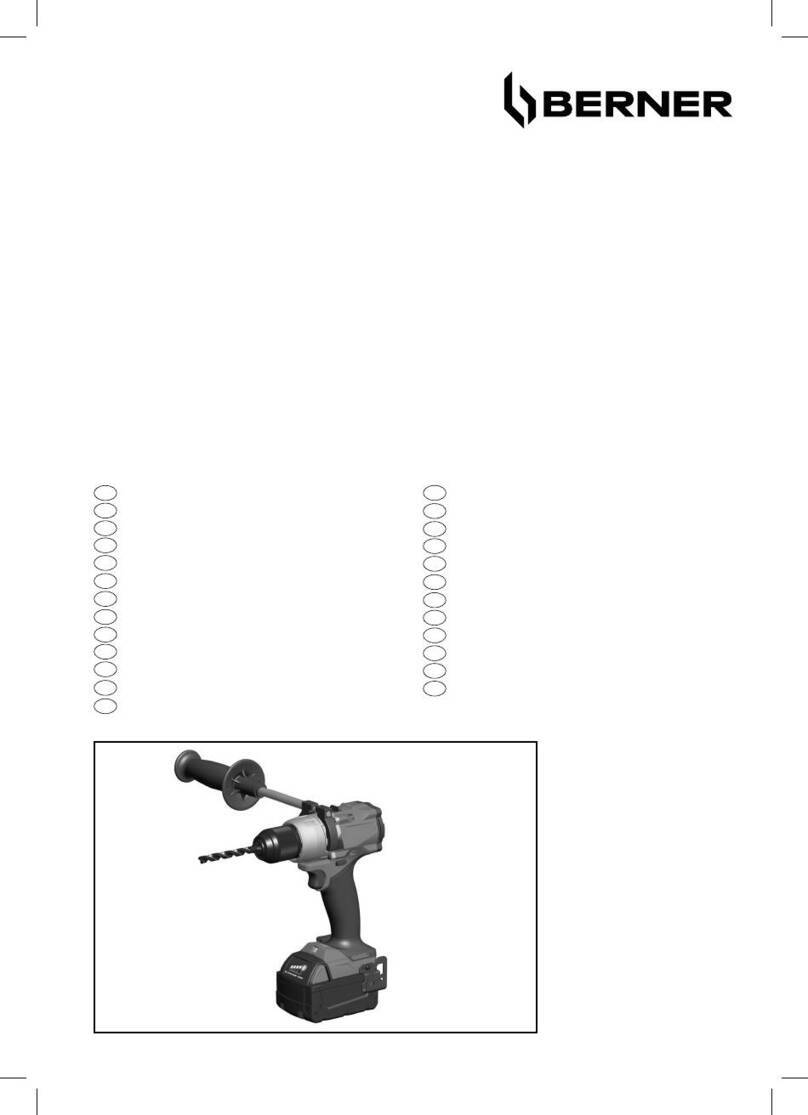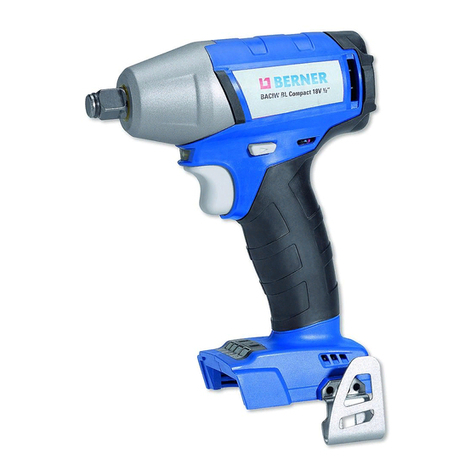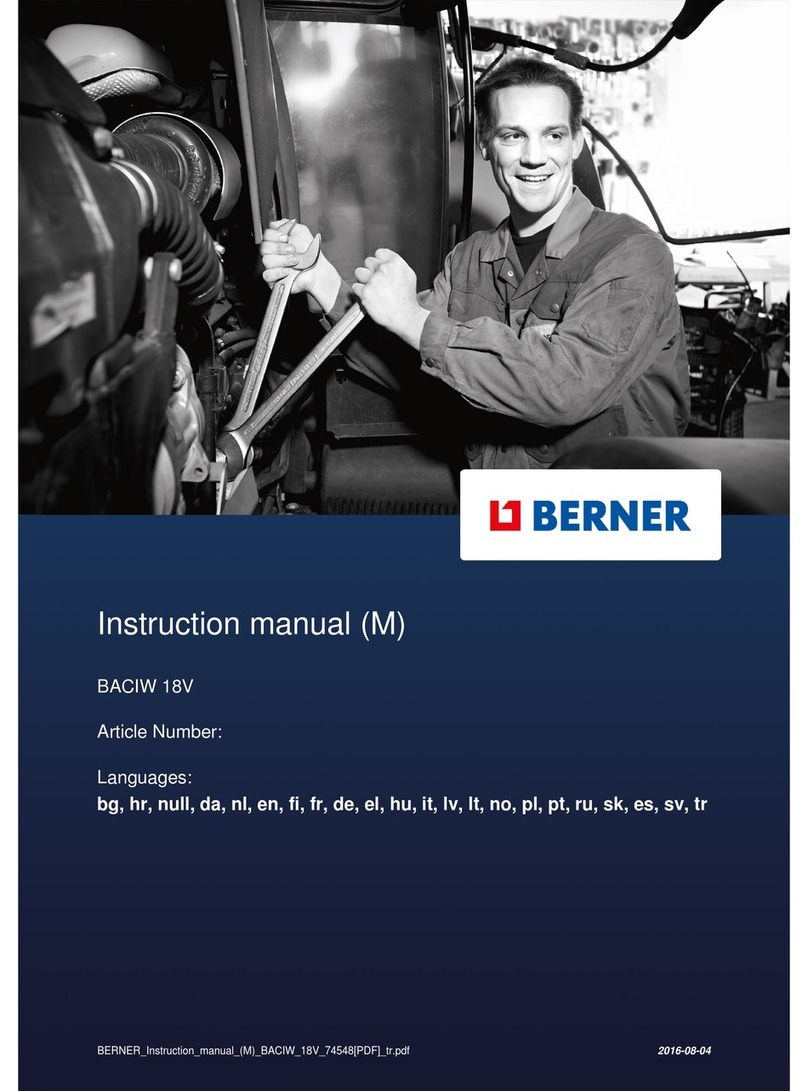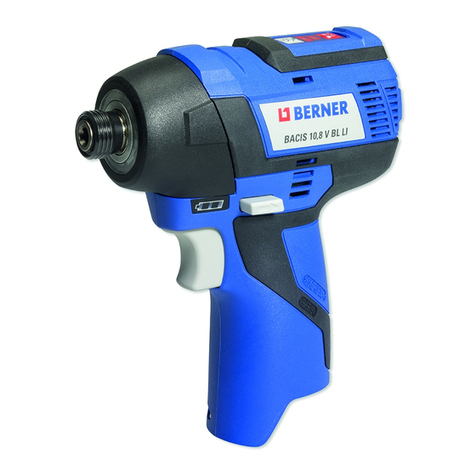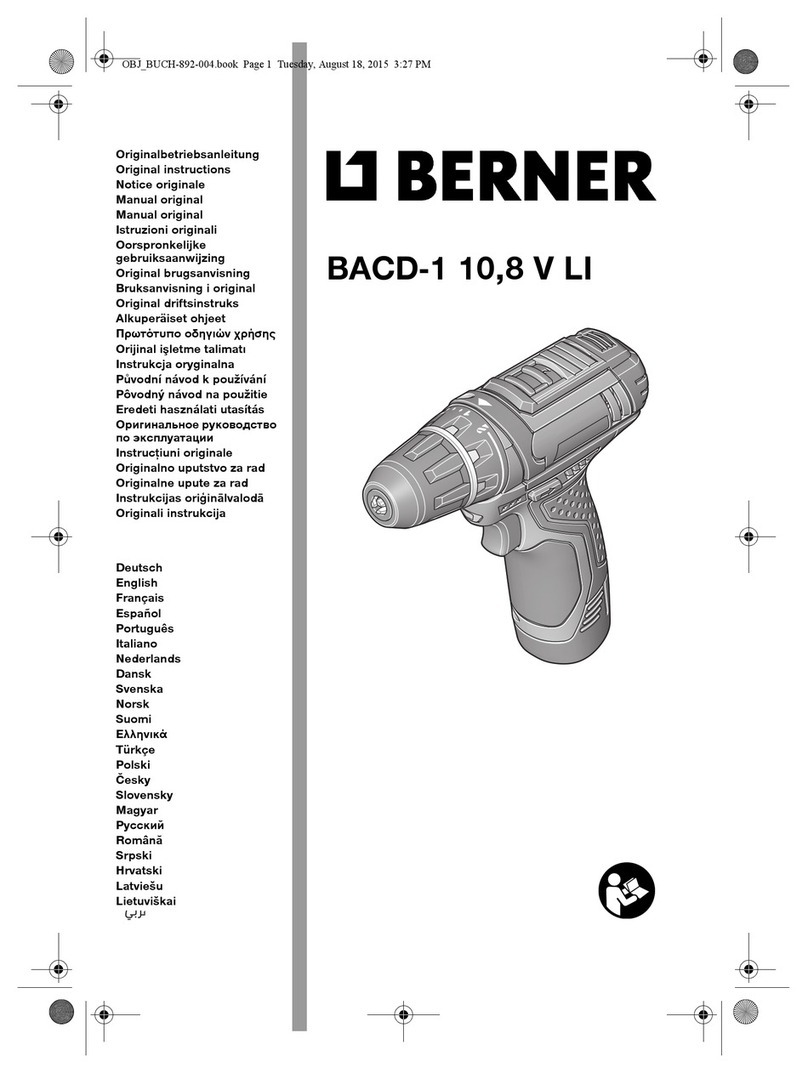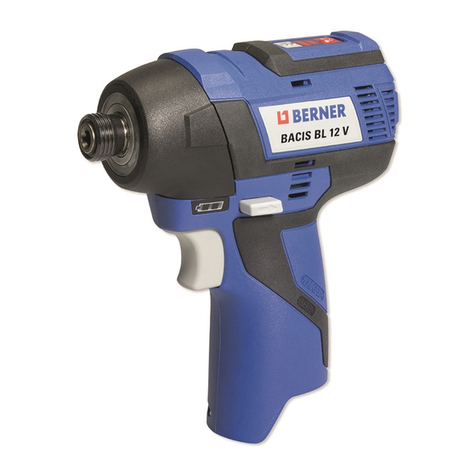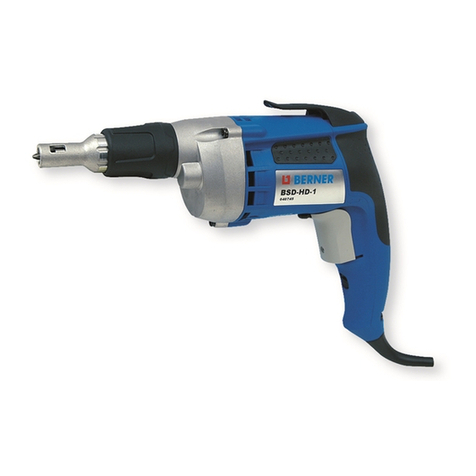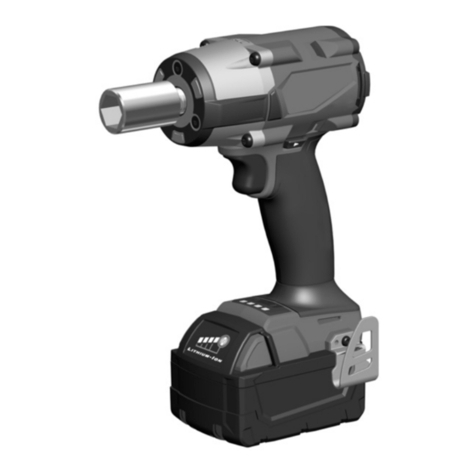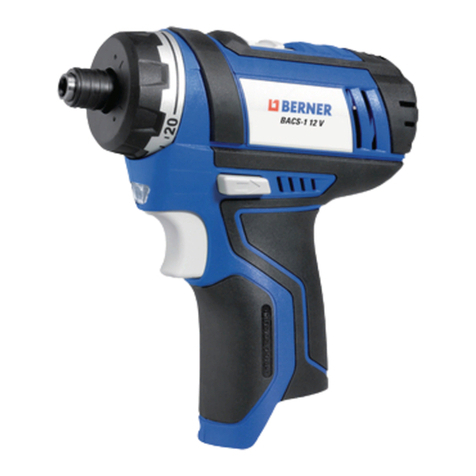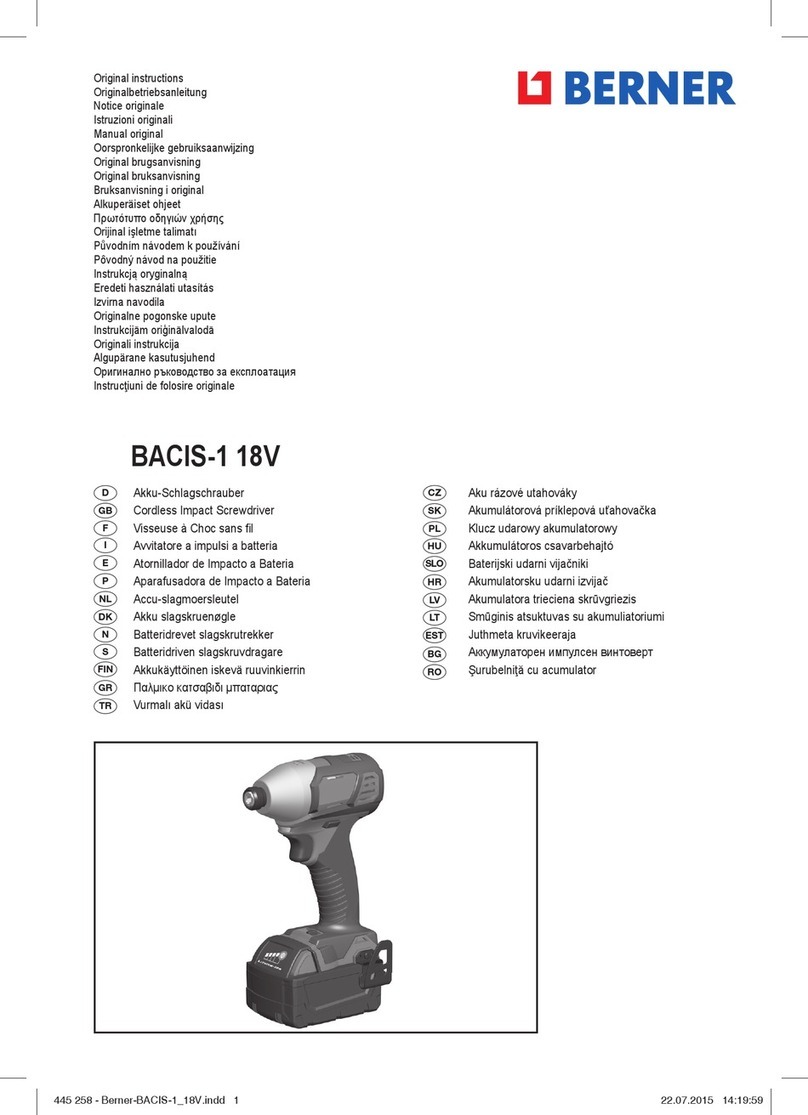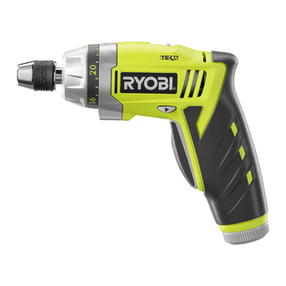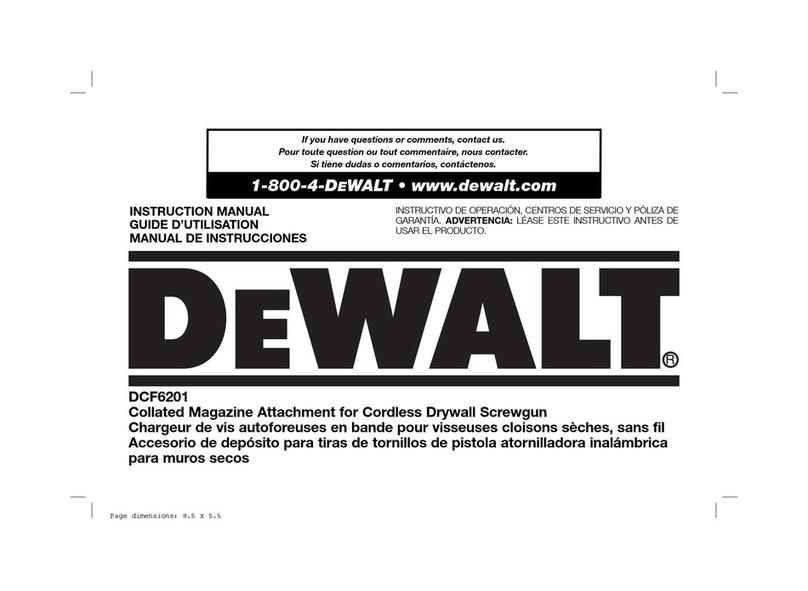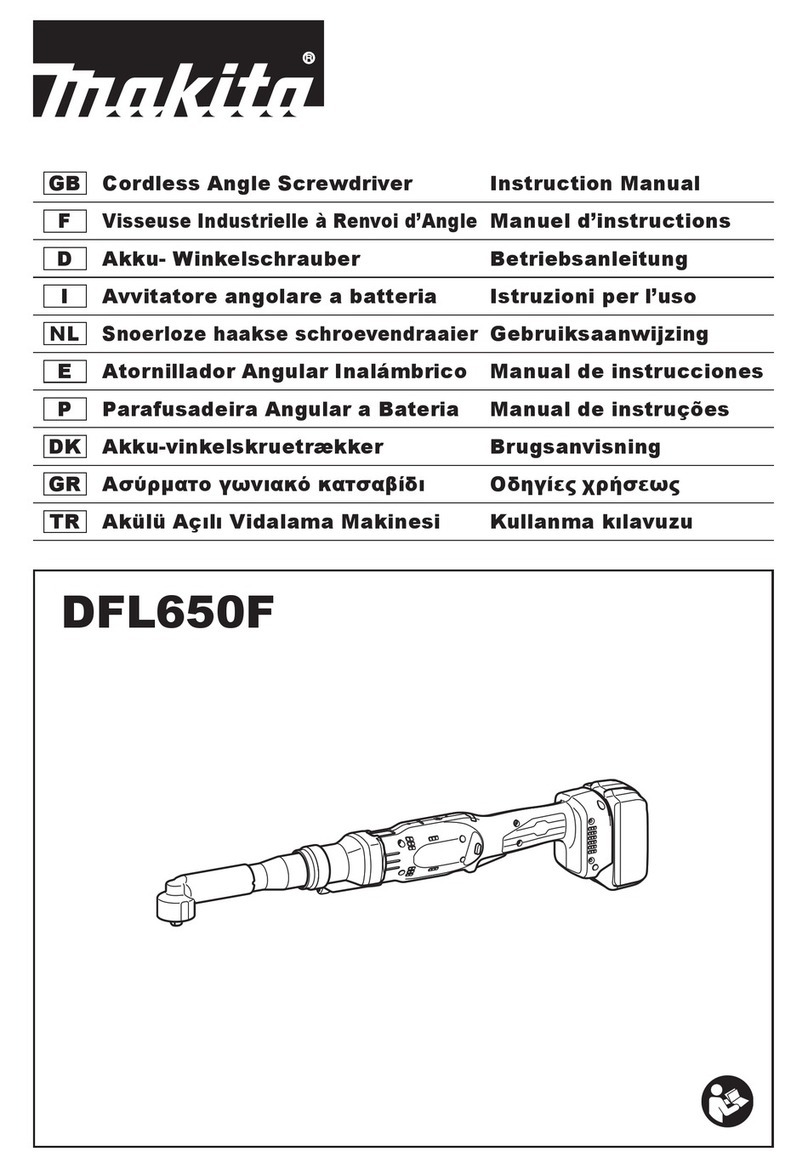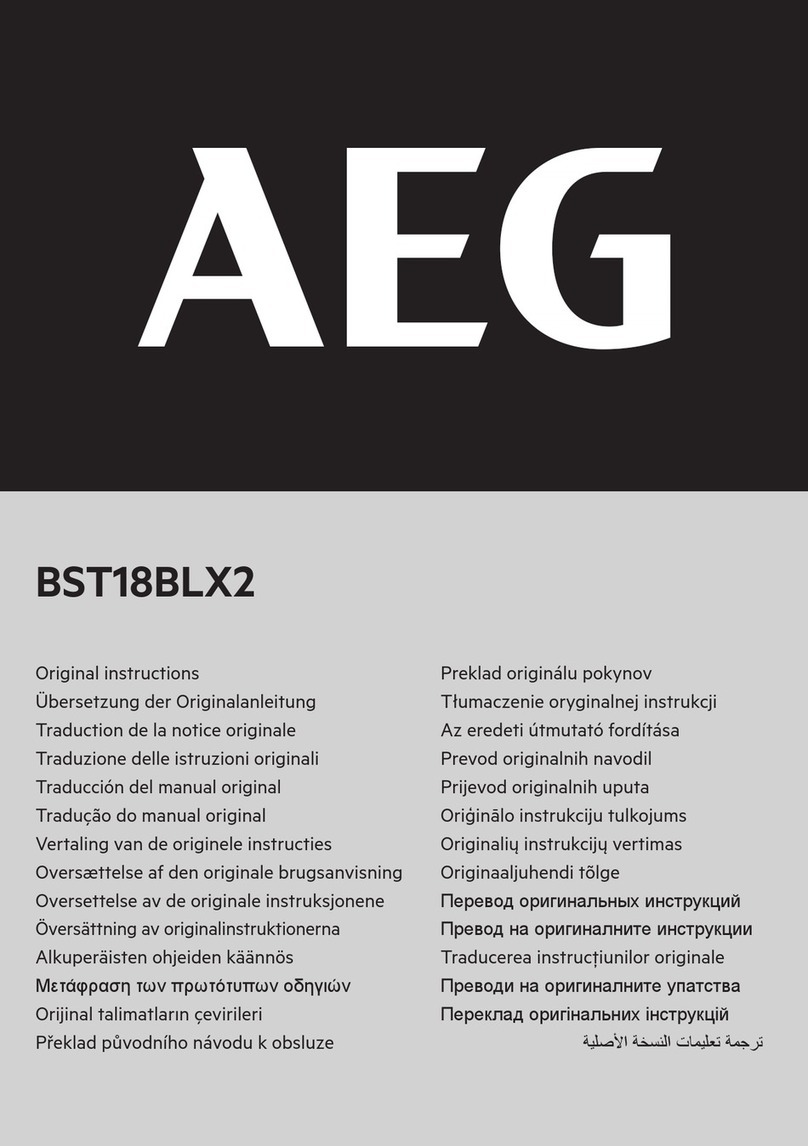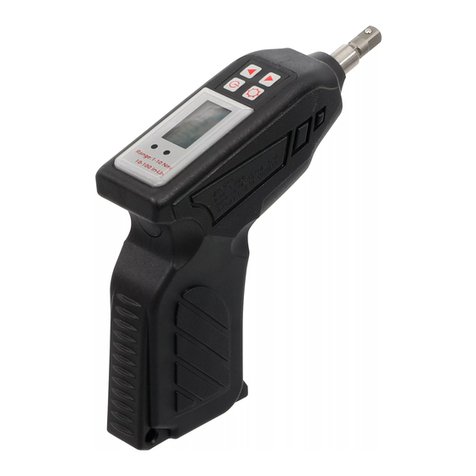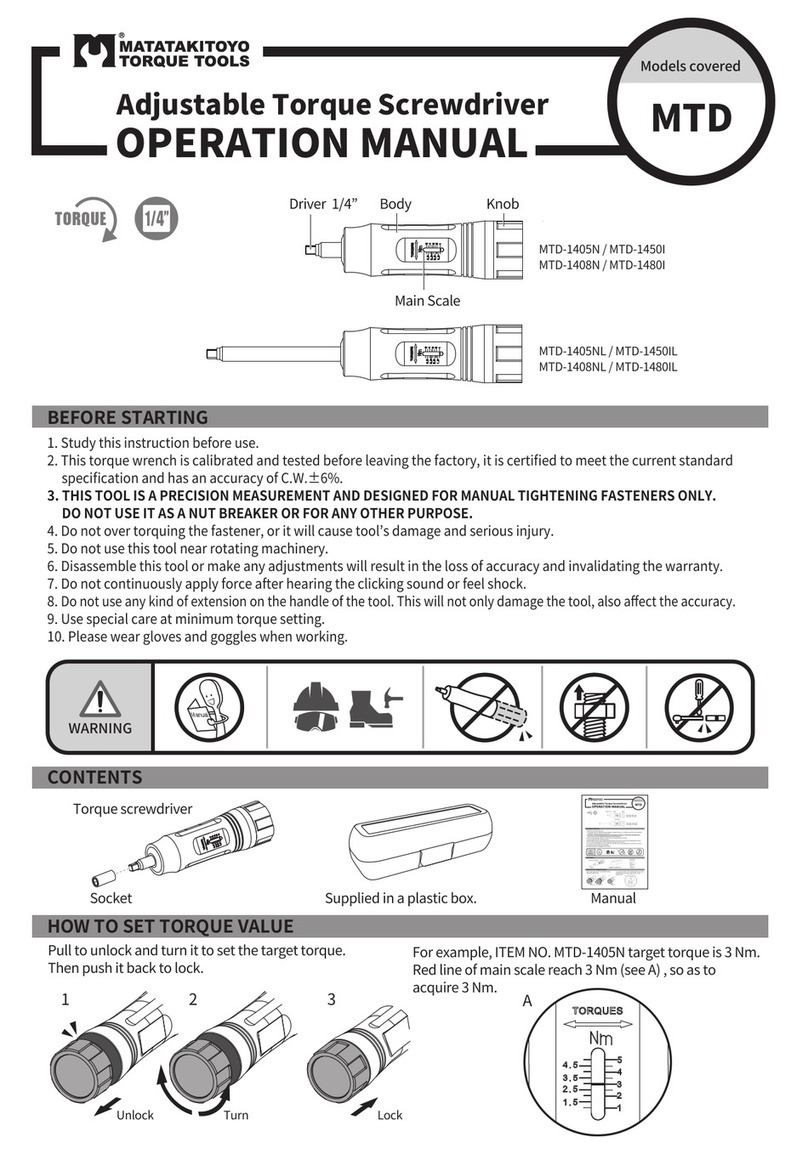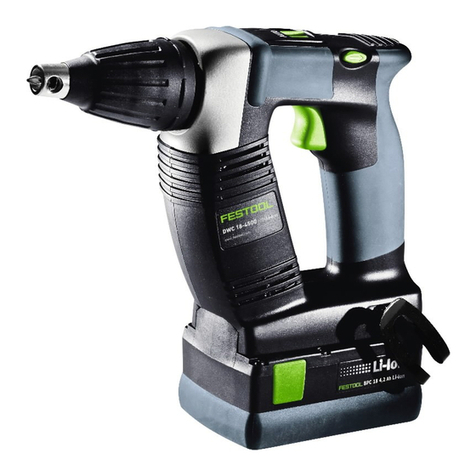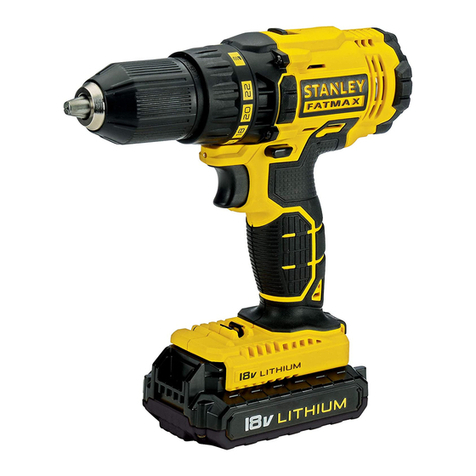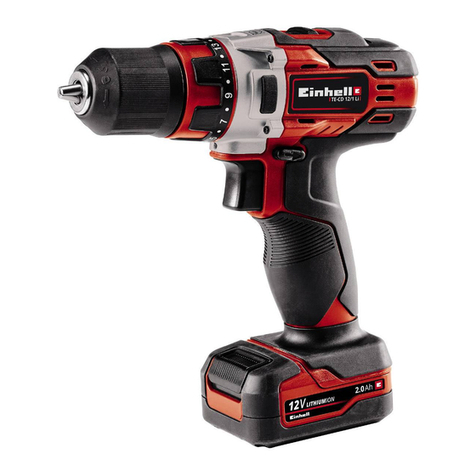
DE
• Wird der Bedienungsanleitung und den Sicherheitsanweisungen nicht
folgegeleistet können Personen- oder Sachschäden entstehen.
wenden.
• Die Sicherheitshinweise dürfen nicht verloren gehen und sollten an
einem für jeden Anwender zugängliche Ort aufbewahrt werden.
derungen von ISO 11148 zu gewährleisten.
• Wurden Reparaturen durchgeführt und müssten Teile getauscht wer
den, ist dies zu vermerken.
• Wird an einem Gerät ein Defekt oder Mangel festgestellt, ist dieses
nicht mehr zu verwenden bis der Mangel abgestellt ist.
• Zur Reparatur nur original Ersatzteile verwenden.
• Arbeitshandschuhe, Sicherheitsbrille tragen und Gehörschutz tragen.
• Enganliegende Arbeitsschutzkleidung tragen.
• Druckluftwerkzeuge gehören nicht in Kinderhände.
• Nur einwandfreie schlagfeste, dafür vorgesehene, Schraubeinsätze
verwenden.
• Schraubeinsätze immer, gegeben den Vorschriften, mit dem Gerät
verbinden und sichern.
• Bei laufendem Gerät nicht an drehende Schraubeinsätze greifen.
• Gefahr durch Aufwicklung kann zu starken Verletzungen führen.
• Schmuck wie Hals- oder Armketten, lange Haare oder lockere
Handschuhe von dem Gerät fern halten.
• Gerät nicht in explosionsgefährdeten Räumen verwenden.
• Gerät nicht auf andere Personen richten.
• Gerät mit aufgesteckter Nuß nicht im Leerlauf drehen lassen.
• Werkzeugeinsätze wechseln, während der Wartung oder wenn nicht in
Verwendung die Luftzufuhr trennen um Personen- oder Sachschäden
zu vermeiden.
• Druckluftwerkzeuge dürfen nicht in Kontakt mit Stromquellen kommen.
• Das Gerät ist nicht gegen den Kontakt mit elektrischen Stromquel
len isoliert.
SPEZIELLE SICHERHEITSHINWEISE
ALLGEMEINE SICHERHEITSHINWEISE
